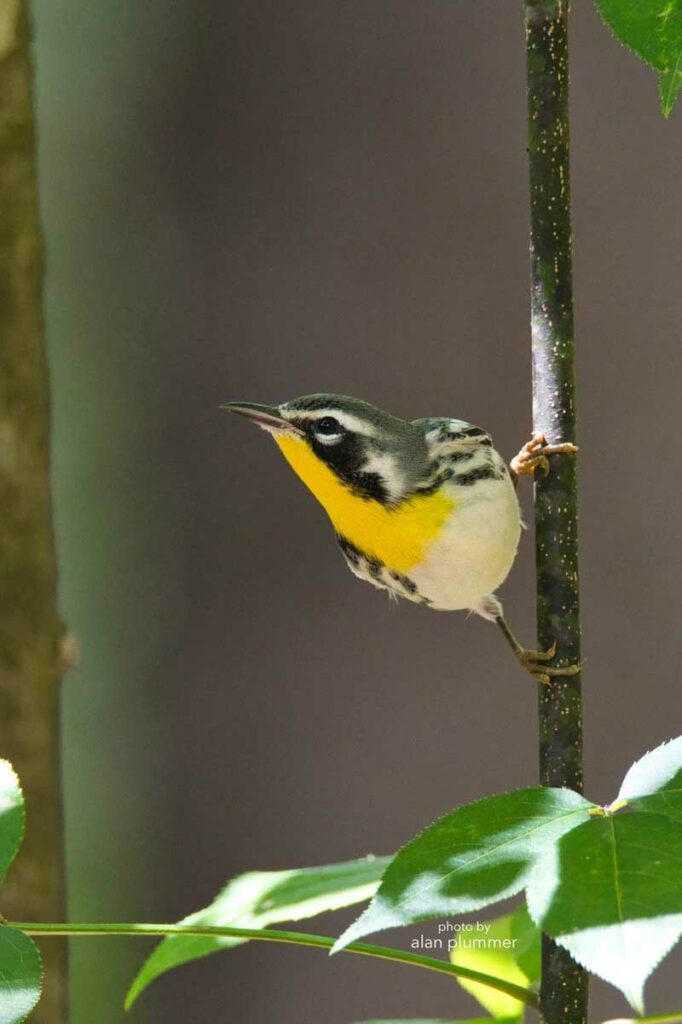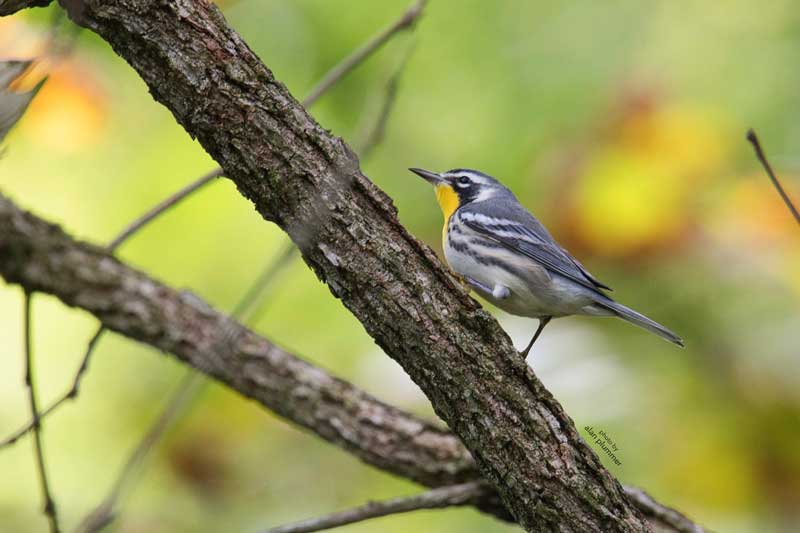At Warner Park Nature Center, we are thrilled with the return of our summer birds. Many of them departed to warmer climates for the winter and have survived the long journey north to return here to breed at Warner Parks. One of our favorites is the Yellow-throated Warbler.

How to identify
3 features can help you to identify this beautiful and aptly named warbler:
- A brilliant yellow throat, black face with a broad white eye strip, and black streaking on its sides.
- Males sing a loud, rolling, and descending song – listen here.
- This warbler was once called the Yellow-throated Creeper because of the way it foraged, or searched for beetles, larvae, and other insects on the upper surfaces of tree limbs and crevices of tree trunks.
Observe
You would think such a strikingly beautiful and vocal bird would be easy to observe. But surprisingly, little is known about its breeding behavior. See if you can find its nest which may be in the canopy of tall trees.
Help at Home
Unlike many warblers who winter in South America, the Yellow-throated Warbler winters in the very southern US and parts of Central America. And unlike many warbler species, Yellow-throated Warbler populations seem to be stable and even increasing to the north. Let us continue this trend by learning what you can do at home and in your community: 7 tips to helping our birds.
Help Us!
The BIRD Program is funded by Friends of Warner Parks, in collaboration with Warner Park Nature Center and Nashville Metro Parks and Recreation. This year marks the 40th year of the WPNC Bird Banding Station thanks to our dedicated volunteers, staff, and partners! Please support our legacy bird research and public engagement programs with a donation, becoming a member, and volunteering with Warner Parks. #ProtectTheBirds #ProtectWarnerParks.


